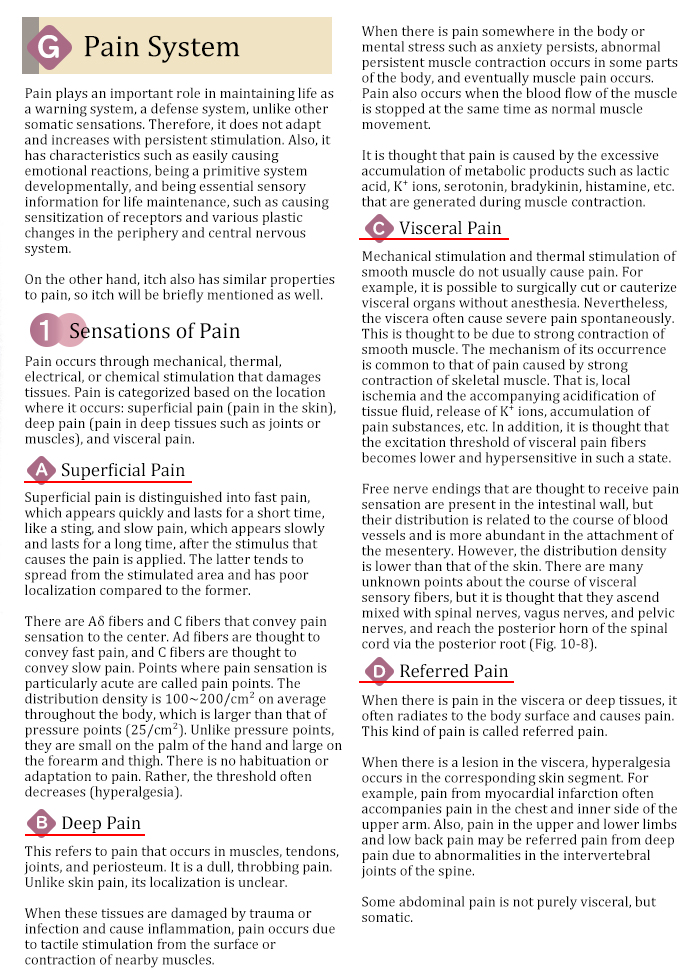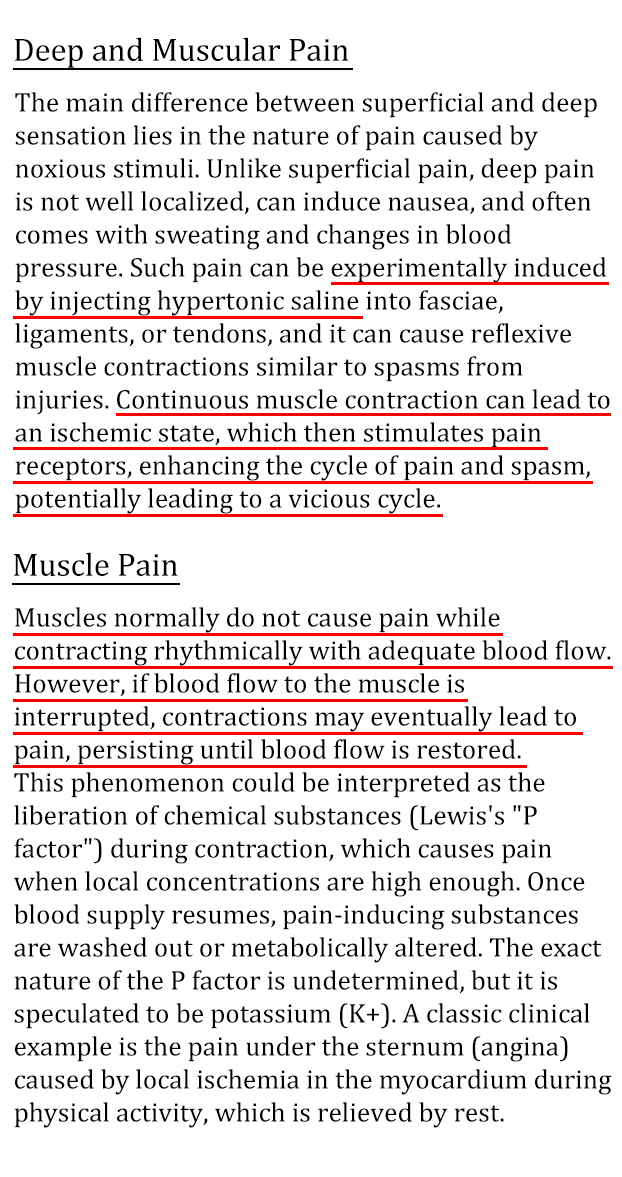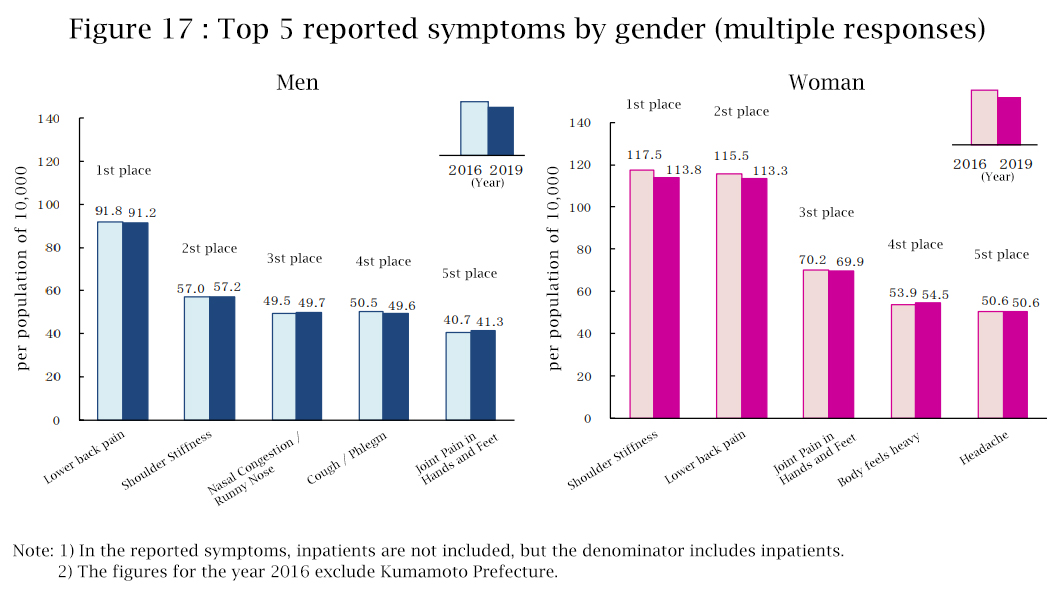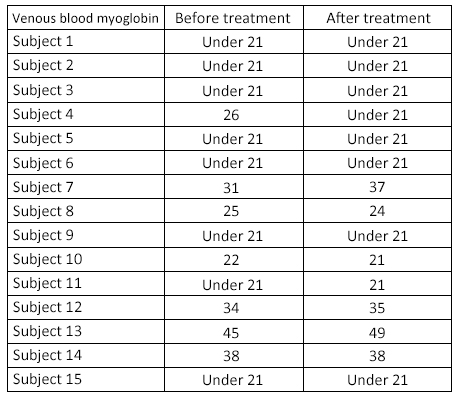Pain and "kanshoho"
Explanatory Video
Understanding the Connection: Pain and "kanshoho"
Chronic pain such as lower back pain, shoulder tension, and joint pain is often attributed to the ‘tension (stiffness or tightness) of muscles.’
Even among healthcare professionals, some people believe that pain is caused by nerve compression, misalignment or displacement of bones, poor posture, and high levels of stress.
However, in order to relieve pain from as many individuals as possible as soon as possible, we will explain the causes of pain from the perspective of Western medicine (physiology).
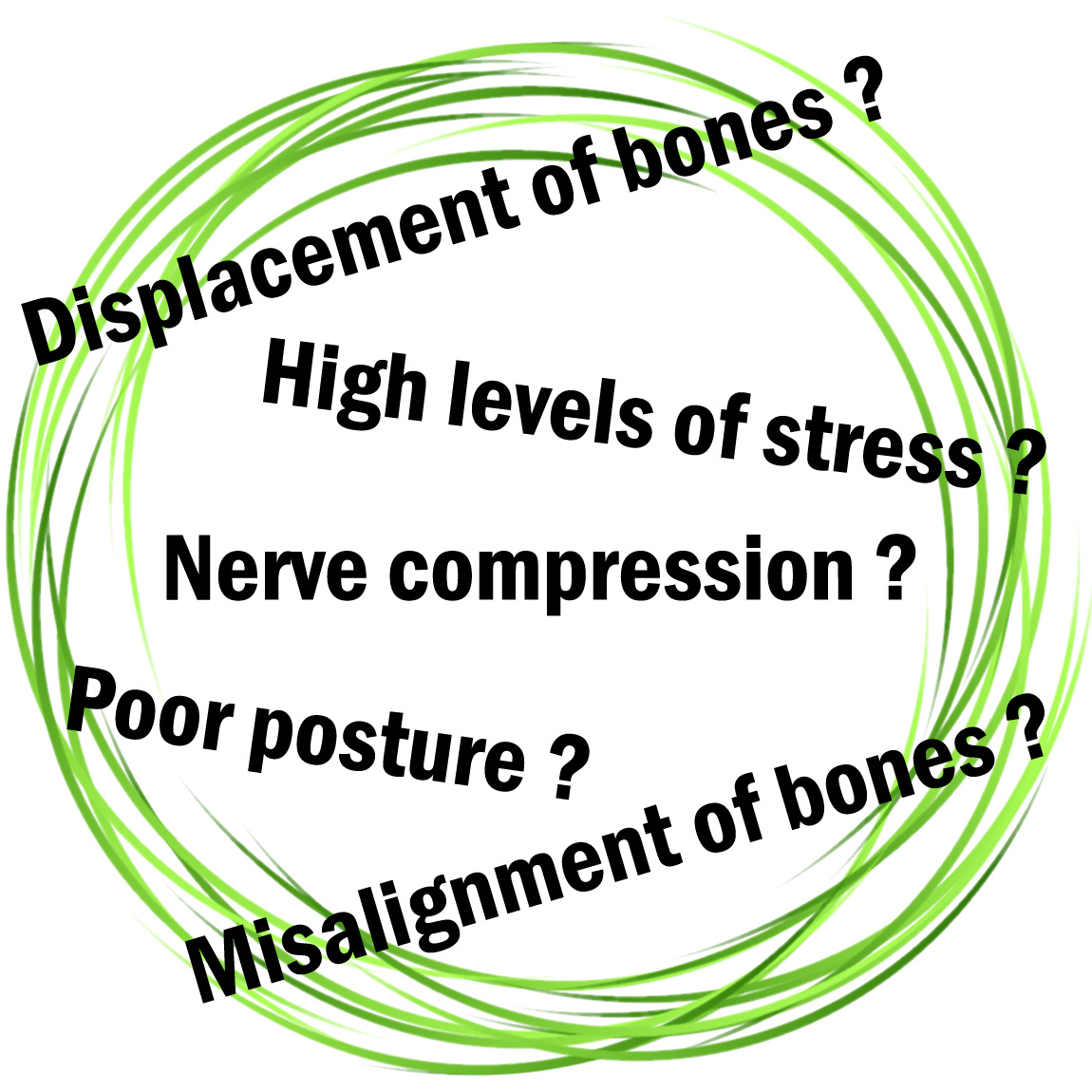
In Western medicine (physiology), there are four types of pain: “superficial pain,” “deep pain,” “visceral pain,” and “referred pain” (1).
The pain in the lower back or shoulder stiffness is categorized as “deep pain,” while the ability to walk normally but experiencing pain in the knee or hip joint also falls under “deep pain.”
※Deep pain refers to pain in muscles, tendons, ligaments, and bone membranes.
※Superficial pain is pain on the body’s surface.
※Visceral pain is pain from internal organs.
※Referred pain is pain felt in a different part of the body.
Many cases of deep pain are associated with muscle pain.
Muscle pain, which is a form of deep pain, occurs due to sustained muscle contraction (tension) leading to ischemia (poor blood circulation) (2).
It is noted that in cases of persistent pain (chronic pain), “muscles contract when blood flow to them is interrupted, and the pain continues until blood flow is restored” (2).
Pathologically, when deep pain persists for more than three months, it is generally referred to as “chronic pain” (3).
Regarding lower back pain, Skorupska et al. from Poland define it as “one of the most common pain disorders, characterized by pain localized below the costal margin and above the gluteal folds, muscle tension, or stiffness” (4).
Skorupska et al.
Low back pain is defined as:
・Muscle tension
・Muscle stiffness
In relation to chronic tension-type headache, Ashina et al. from Denmark reported that there is a positive correlation between muscle stiffness (specifically, the trapezius muscle) and pain in chronic tension-type headache patients (5). This suggests that chronic pain patients often exhibit strong muscle tension, supporting common clinical observations.
Ashina et al.
Patients with chronic
tension-type headache:
・Muscle stiffness and pain
・Positive correlation
However, according to Japan’s Ministry of Health, Labour and Welfare’s National Survey of Living Conditions (6), lower back pain is the leading complaint among the population. This indicates that conventional treatment methods may not have been effective in addressing this issue, highlighting the importance for healthcare professionals to acknowledge this reality.
When using “kanshoho” to relax muscles, they become so soft that they can be described as being in “a state of virtually zero tension.”
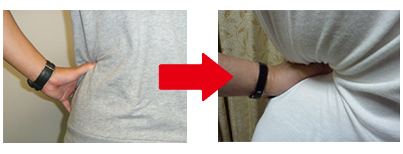

Rocky Mountain Marshmallow – Horizontal
Separated by Tissue Paper – Hardness 33
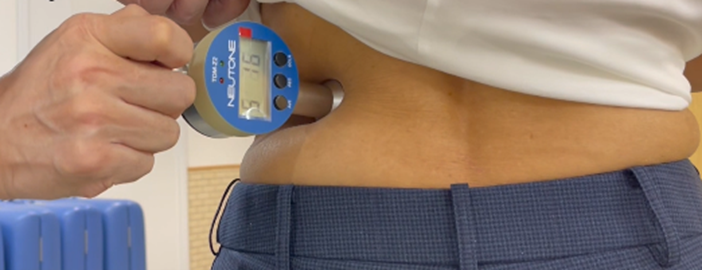
Muscles after “kanshoho“
Treatment – Muscle Hardness 16

Rocky Mountain Marshmallow – Horizontal
Separated by Tissue Paper – Hardness 33

Muscles after “kanshoho“
Treatment – Muscle Hardness 16
After the “kanshoho” treatment, you can see from the hardness meter that the hardness is about 1/2 that of marshmallow (less than 20).
Patients complaining of lower back pain often have muscle hardness levels above 50, making “kanshoho“ a reliable method for pain relief. For more details, refer to ‘Muscle Relaxation and “kanshoho“.’
This “a state of virtually zero muscle tension” can be likened to the muscles of a relaxed cat.
What people typically consider as soft muscles would be considered firm in the context of mammals.

When muscles are stiff, it can lead to pain and reduced blood circulation.
Reduced blood circulation can cause a drop in body temperature.
In general, when body temperature drops, the production of white blood cells decreases, and when body temperature rises, the production of white blood cells increases.
A decrease in white blood cell production makes it easier for bacteria and viruses to enter the body.

“kanshoho“ was developed to convert the gel-like state of the “interstitium (fascia)” into a sol, or liquid state.
applying a spherical object (such as a fingertip) to an area of approximately 1 cm² on a tense muscle, pressing it perpendicularly against the muscle fibers with about 500 gf of pressure, all while stretching and contraction the muscle. This is a hands-on therapy designed to induce muscle relaxation.
When relaxing the muscles through “kanshoho”, it is done without invasiveness and without causing muscle damage (※1). This method can achieve a state of virtually zero muscle tension, and it is easy to learn with high reproducibility.
With the development of “kanshoho“, the treatment of chronic pain has become more straightforward.
Let’s definitely introduce “kanshoho“ into the medical field and work together to help as many patients as possible who are suffering from pain and illness.
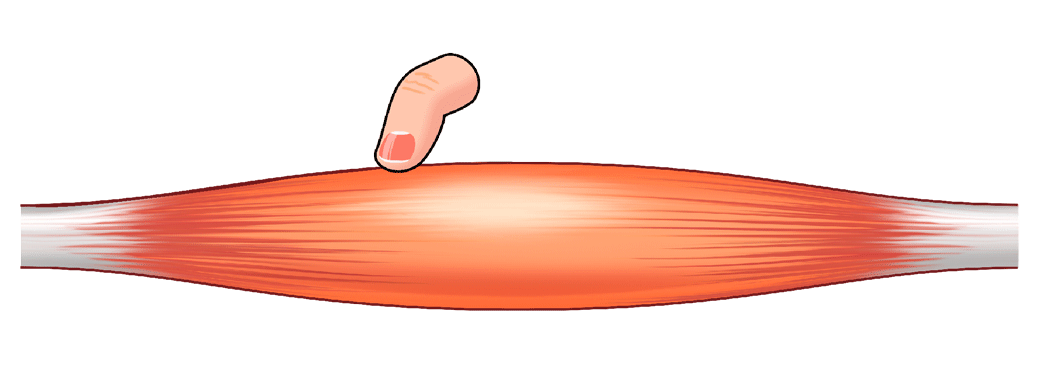
(1) Ozawa, S., Fukuda, K., “Standard Physiology, 8th Edition,” Igaku-Shoin, 2017, p. 227.
(2) Ganong, W. F., Okada, Y., “Perspectives in Medical Physiology, Original Edition 20th Edition,” 2002, p. 151.
(3) Bonica JI : General consideration of chronic pain.The Management of Pain, 2nd ed, Bonica JI, Lea & Febiger, Philadelphia, 180-196, 1990.
(4) Skorupska E. Muscle Atrophy Measurement as Assessment Method for Low Back Pain Patients. Adv Exp Med Biol. 2018;1088:437-461.
(5) Ashina M, Bendtsen L, Jensen R, Sakai F, Olesen J. Muscle hardness in patients with chronic tension-type headache: relation to actual headache state. Pain. 1999 Feb;79(2-3):201-5.
(6) https://www.mhlw.go.jp/toukei/saikin/hw/k-tyosa/k-tyosa22/dl/14.pdf P17
(*1) During the clinical trial reported in Hirozumi Sakaguchi et al’s study titled “The Effect of “kanshoho” on Low Back Pain (Lumbago)” published in the Japanese Journal of Integrative Medicine in 2012, it was noted that some individuals had levels of myoglobin below the detection limit, while those with levels above the detection limit did not exhibit significant fluctuations due to the treatment.
(Myoglobin detection threshold: Less than 70 ng/mL, as of October 3, 2017)
